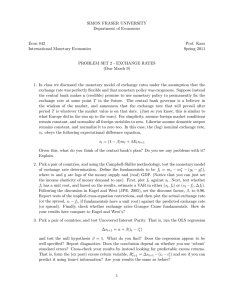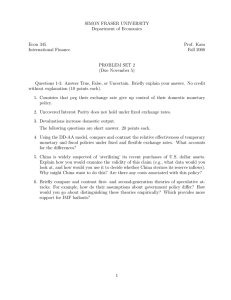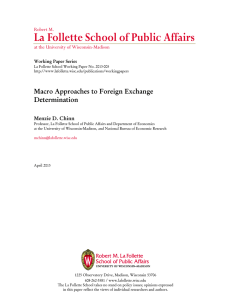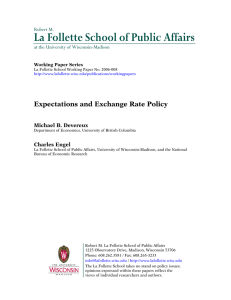SIMON FRASER UNIVERSITY Department of Economics Econ 842 Prof. Kasa
advertisement
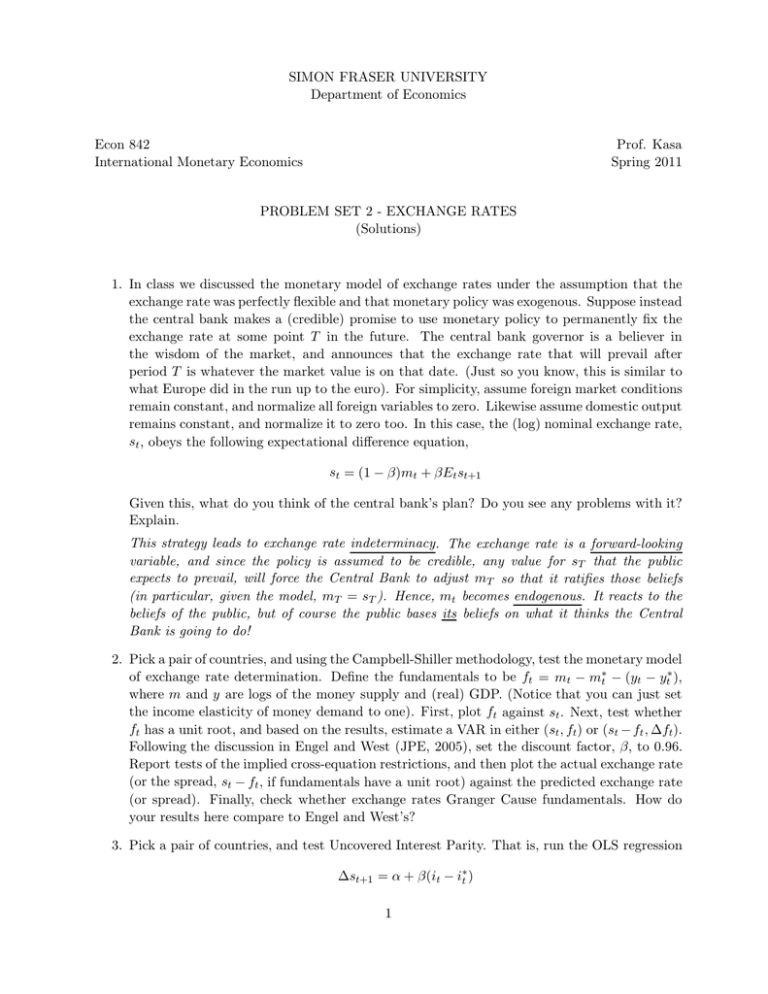
SIMON FRASER UNIVERSITY Department of Economics Econ 842 International Monetary Economics Prof. Kasa Spring 2011 PROBLEM SET 2 - EXCHANGE RATES (Solutions) 1. In class we discussed the monetary model of exchange rates under the assumption that the exchange rate was perfectly flexible and that monetary policy was exogenous. Suppose instead the central bank makes a (credible) promise to use monetary policy to permanently fix the exchange rate at some point T in the future. The central bank governor is a believer in the wisdom of the market, and announces that the exchange rate that will prevail after period T is whatever the market value is on that date. (Just so you know, this is similar to what Europe did in the run up to the euro). For simplicity, assume foreign market conditions remain constant, and normalize all foreign variables to zero. Likewise assume domestic output remains constant, and normalize it to zero too. In this case, the (log) nominal exchange rate, st , obeys the following expectational difference equation, st = (1 − β)mt + βEt st+1 Given this, what do you think of the central bank’s plan? Do you see any problems with it? Explain. This strategy leads to exchange rate indeterminacy. The exchange rate is a forward-looking variable, and since the policy is assumed to be credible, any value for sT that the public expects to prevail, will force the Central Bank to adjust mT so that it ratifies those beliefs (in particular, given the model, mT = sT ). Hence, mt becomes endogenous. It reacts to the beliefs of the public, but of course the public bases its beliefs on what it thinks the Central Bank is going to do! 2. Pick a pair of countries, and using the Campbell-Shiller methodology, test the monetary model of exchange rate determination. Define the fundamentals to be ft = mt − m∗t − (yt − yt∗ ), where m and y are logs of the money supply and (real) GDP. (Notice that you can just set the income elasticity of money demand to one). First, plot ft against st . Next, test whether ft has a unit root, and based on the results, estimate a VAR in either (st , ft) or (st − ft , ∆ft). Following the discussion in Engel and West (JPE, 2005), set the discount factor, β, to 0.96. Report tests of the implied cross-equation restrictions, and then plot the actual exchange rate (or the spread, st − ft , if fundamentals have a unit root) against the predicted exchange rate (or spread). Finally, check whether exchange rates Granger Cause fundamentals. How do your results here compare to Engel and West’s? 3. Pick a pair of countries, and test Uncovered Interest Parity. That is, run the OLS regression ∆st+1 = α + β(it − i∗t ) 1 and test the null hypothesis β = 1. What do you find? Does the regression appear to be well specified? Report diagnostics. Does the conclusion depend on whether you use ‘robust’ standard errors? Cross-check your results by instead looking for predictable excess returns. That is, form the (ex post) excess return variable, Ret+1 = ∆st+1 − (it − i∗t ) and see if you can predict it using time-t information? Are your results the same as before? 2
